If you watch my Instagram stories, you might have seen ‘the good-looking gardener’ (aka Mackenzie stomping around the garden in ridiculous bright orange ‘crampons’! Possibly the funniest thing I’ve ever seen, but essential for the lawn he tells me. Turns out, since moving to the countryside, we have both become very fond of the garden, and learning more about how to nurture it. Not as straightforward as I thought, indeed! But here’s a piece on how to get green fingered (no matter where you live) and where to start, if you’re thinking of giving it a go too.
First of all, gardening, even on the smallest scale has been proven to benefit both our physical and mental health. It provides physical exercise (digging, mowing, weeding) as well as time spent in the fresh air and is widely accepted to be very good for our general wellbeing. In a time when having projects is essential, I’ve been thinking about how you can get your hands in the soil; how to get green fingered and reap the benefits of nature even if you don’t have a garden.
A Kitchen windowsill is enough to have a mini herb collection. You can buy basil already potted as well as coriander, sage, thyme or parsley and keep them for cooking. You can also freeze herbs for later use if you find you have too many.
On a similarly small scale, a window box is a perfect way to introduce yourself to the world of gardening; simple and inexpensive. For vegetables, buy some cut-and-come-again salad seeds that, once cut, will literally come again. If you want something a bit more colourful then consider violas. If you plant Viola Tricolore (hearts Ease) now, it will flower from roughly August to October. They’re also edible so pop them in salads or on puddings and they’ll look beautiful. Viburnum and camellias work well for greenery all year round with pops of colour when they flower or if you can get hold of some Aurora (Viburnum carlesii) which should flower in the next few weeks.
If you’re planting mint, put it in a pot on its own as it will take over the space. Just plant a tiny bit as a little goes a long way, or buy a growing mint in the supermarket and pot it yourself. Smells wonderful (especially on a warm evening) and you have your own mint for mint tea.
For those of us with a garden or larger outside, April is the perfect time to prepare as the threat of frost won’t be over until May. If you planted seedlings earlier in the year, now is the time to prick them and pot on, keeping them somewhere warm. For rhubarb owners, it’s the time to harvest it and make crumble (yum) and if you’ve got snowdrops anywhere, split them and re-plant.
Early Spring is also the time to repair your lawn, re-seeding any bare patches with grass seed. Clear out the shed that’s been slowly filling up with rubbish, dig out any tree stumps (a serious work out) and make way for new trees to be planted and new colourful beds to be created. With preparation in mind, think about potential pest invasions and what you can get to keep them away- lots of herbs will keep bugs away (including basil, lavender, mint (borage), chives, rosemary and garlic) but if you want something really pretty that will also deter any pests, look at chrysanthemums- the best in the business.
Gardening equipment isn’t as easy to get hold of at the moment as usual (try Facebook Marketplace, eBay and Etsy for local and second-hand options), but you can still buy seeds. Sarah Raven, Thompson-Morgan and Suttons are all still currently selling online but it’s likely you’ll have to join a virtual queue (as I did the other day!) to get your green fingered hands on your garden shopping list! In the US, Walmart have a huge gardening section and Burpee are still delivering, just with a slightly longer shipping time.
If you’re growing vegetables, it’s ideal to have four beds (as you rotate them each year) but three beds is fine if you’re short on space. Group your vegetables together according to type so that you have a roots bed (carrots, beetroot and courgettes), a legumes bed (beans, artichokes and peas) and one for brassicas (cabbage, lettuce and cauliflowers). If you have space for a fourth bed, make it a potato one as potatoes like having space to themselves but they will consider sharing their bed with strawberries, onions, Swiss chard, shallots, garlic, celery endive, radicchio and lettuce.
Depending on the weather, tomatoes are the easiest vegetable to grow as you don’t need a flower bed. Grow them in pots or in grow bags on your terrace or balcony. They like the warmth so go for a greenhouse if you have one.
Most garden based activities will get you moving which, even for a small amount of time, really helps with isolation cabin fever. Raking leaves, watering plants or tidying up pots are all essential jobs that get you outside and if you really want to feel the wind in your hair, jump on your mower and zip around the lawn. Communal gardens also need some care and attention so don’t worry if you don’t have a space of your own, offering a local weeding service might be very useful to a neighbour. For tips and inspiration on how to get green fingered, I don’t think you can beat BBC’s Gardeners World with Monty Don. I’m obsessed. Happy planting all!
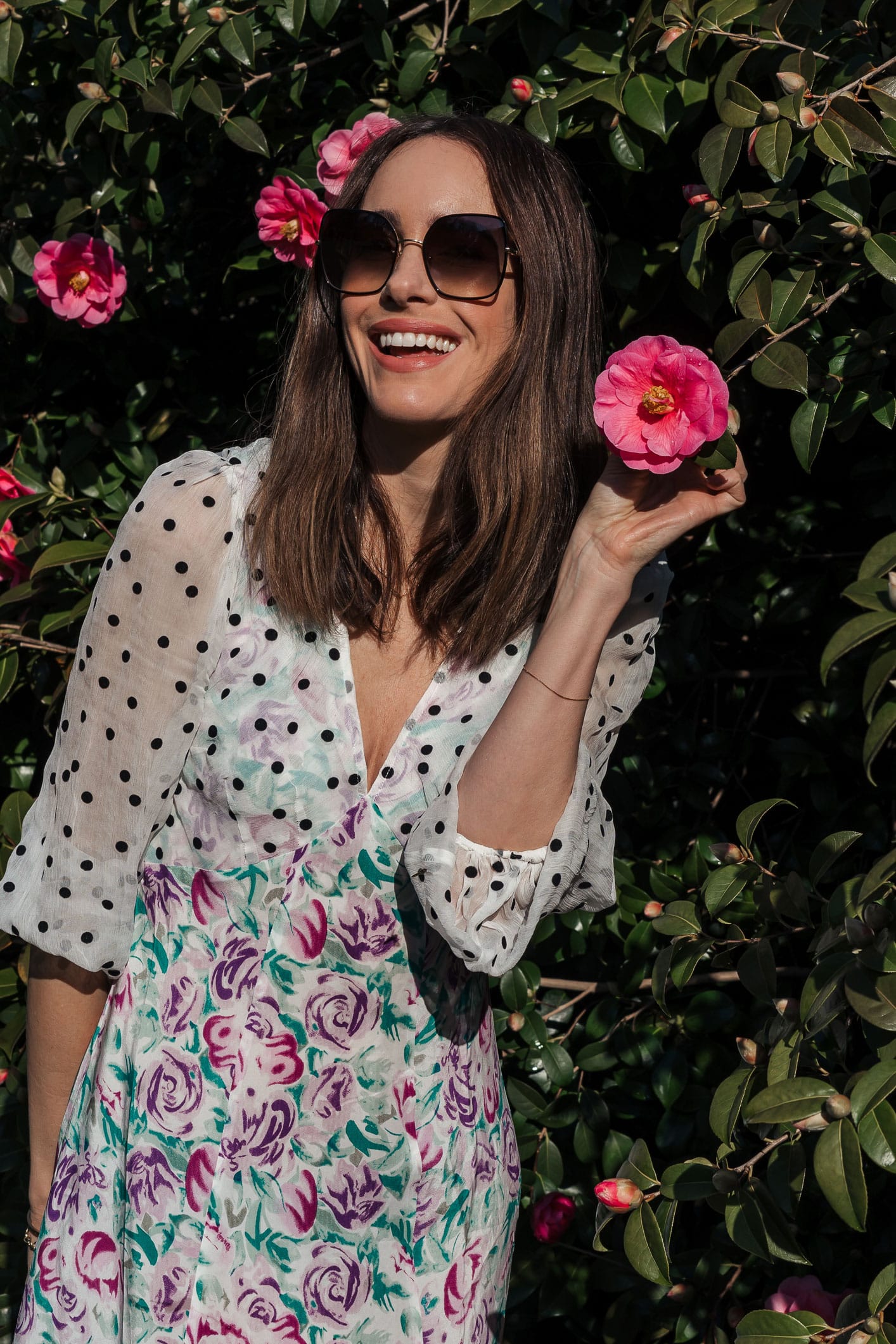
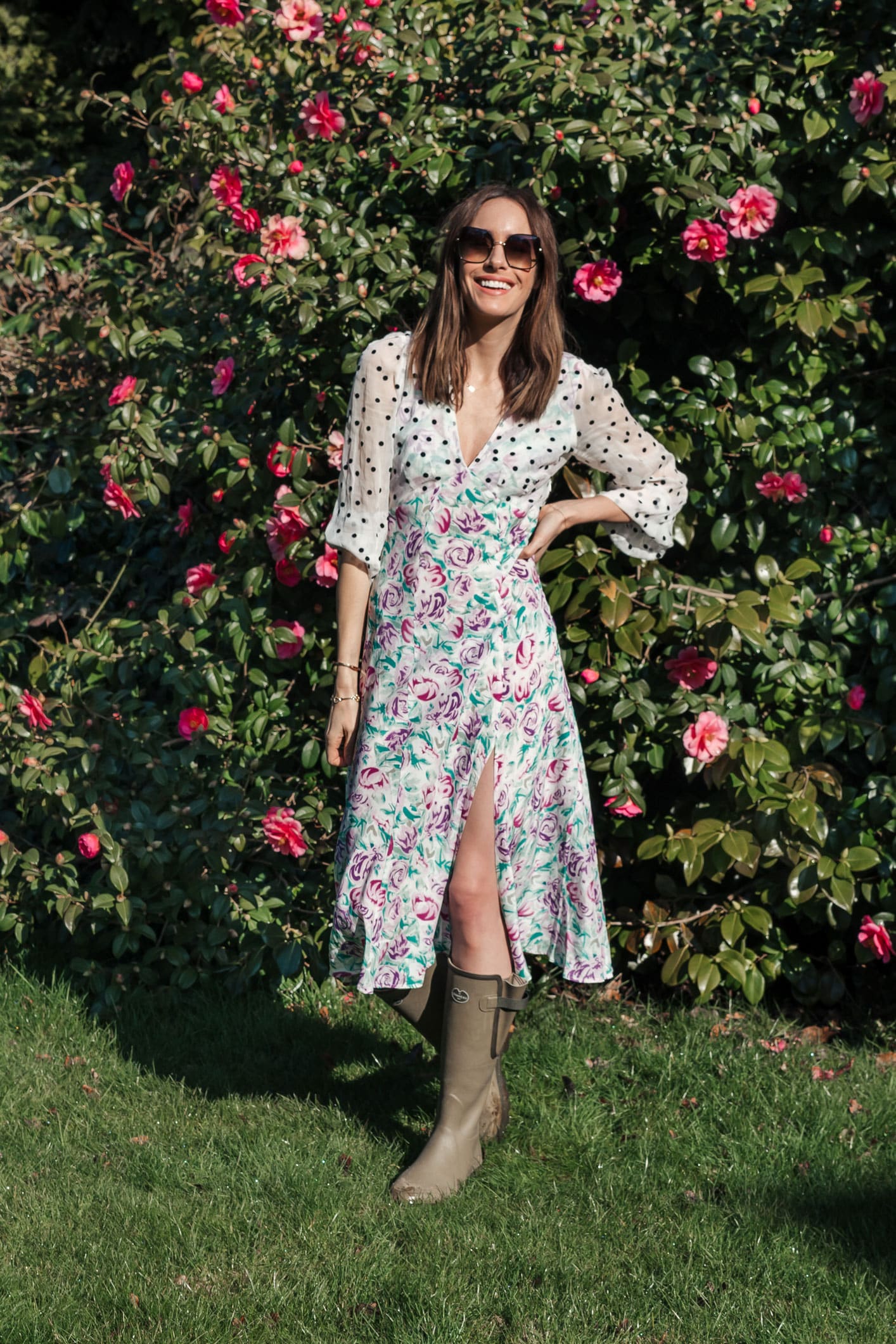
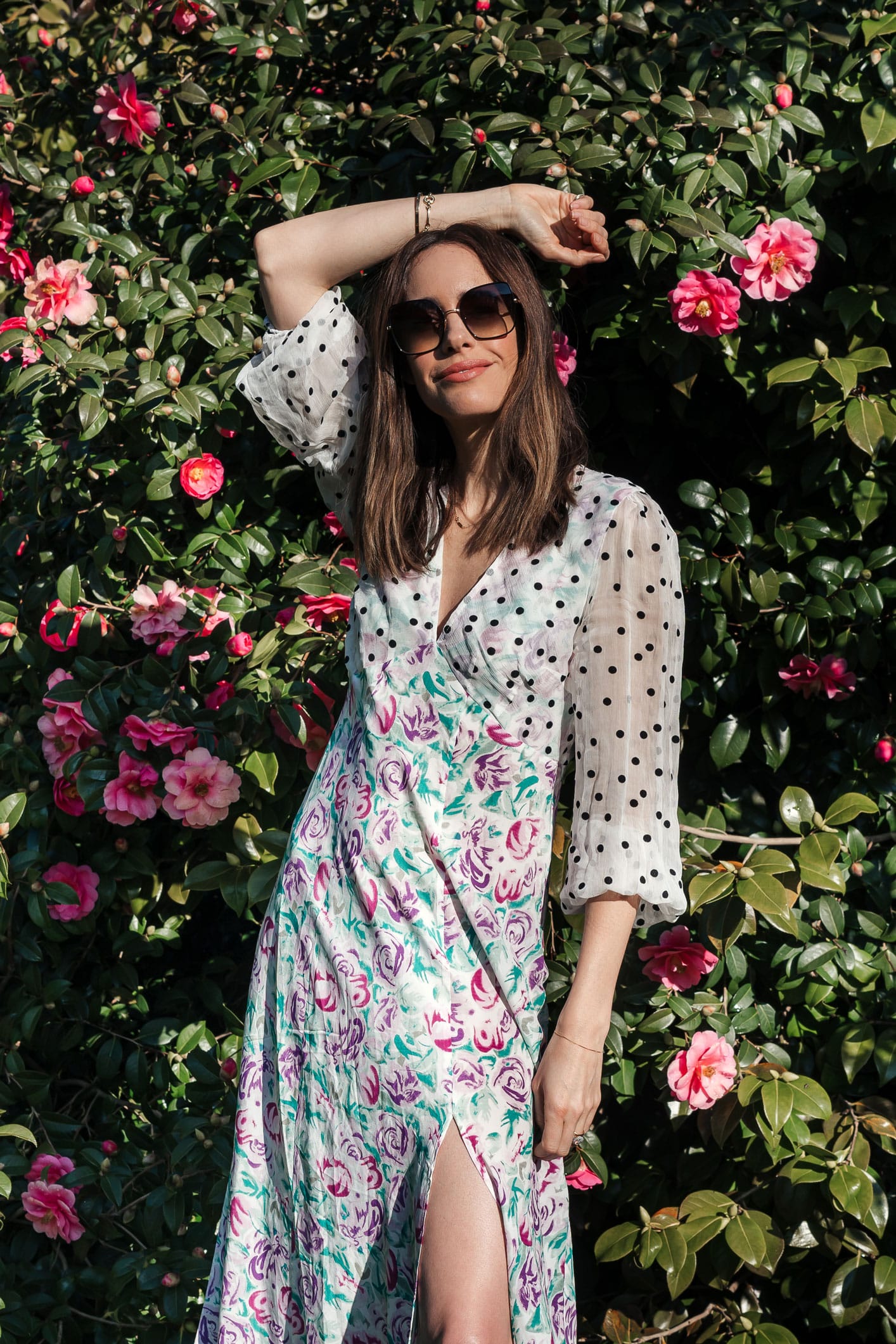

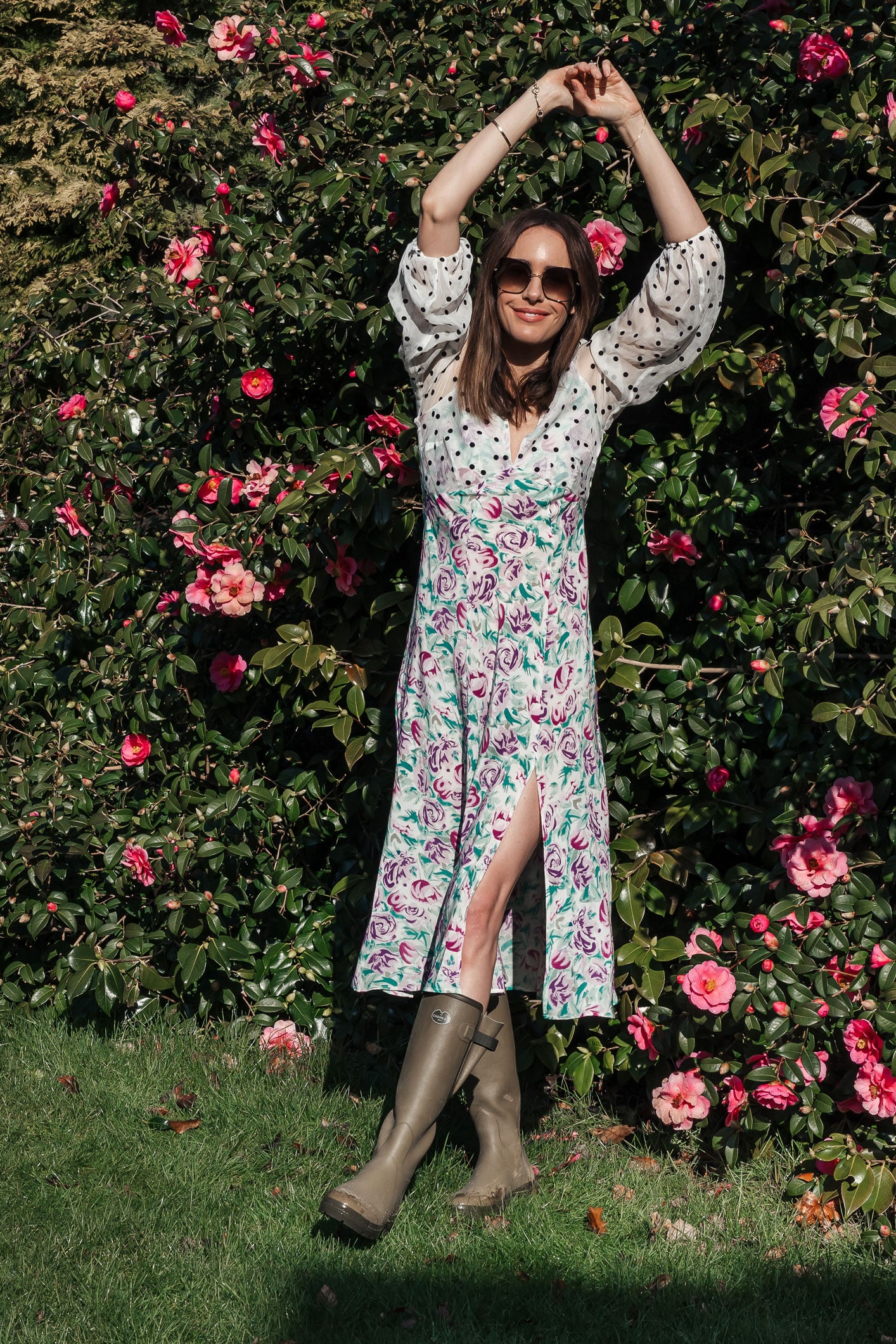
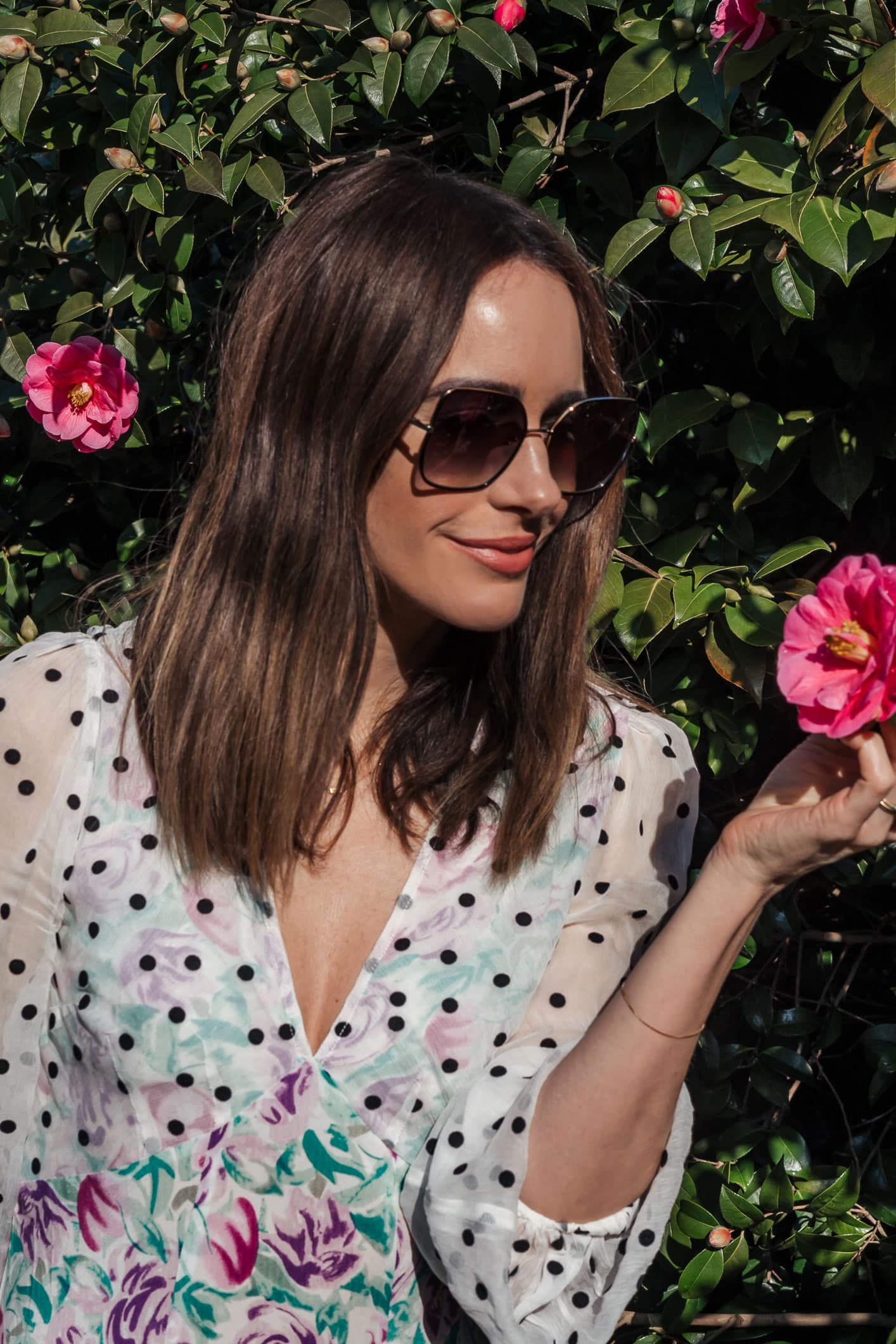
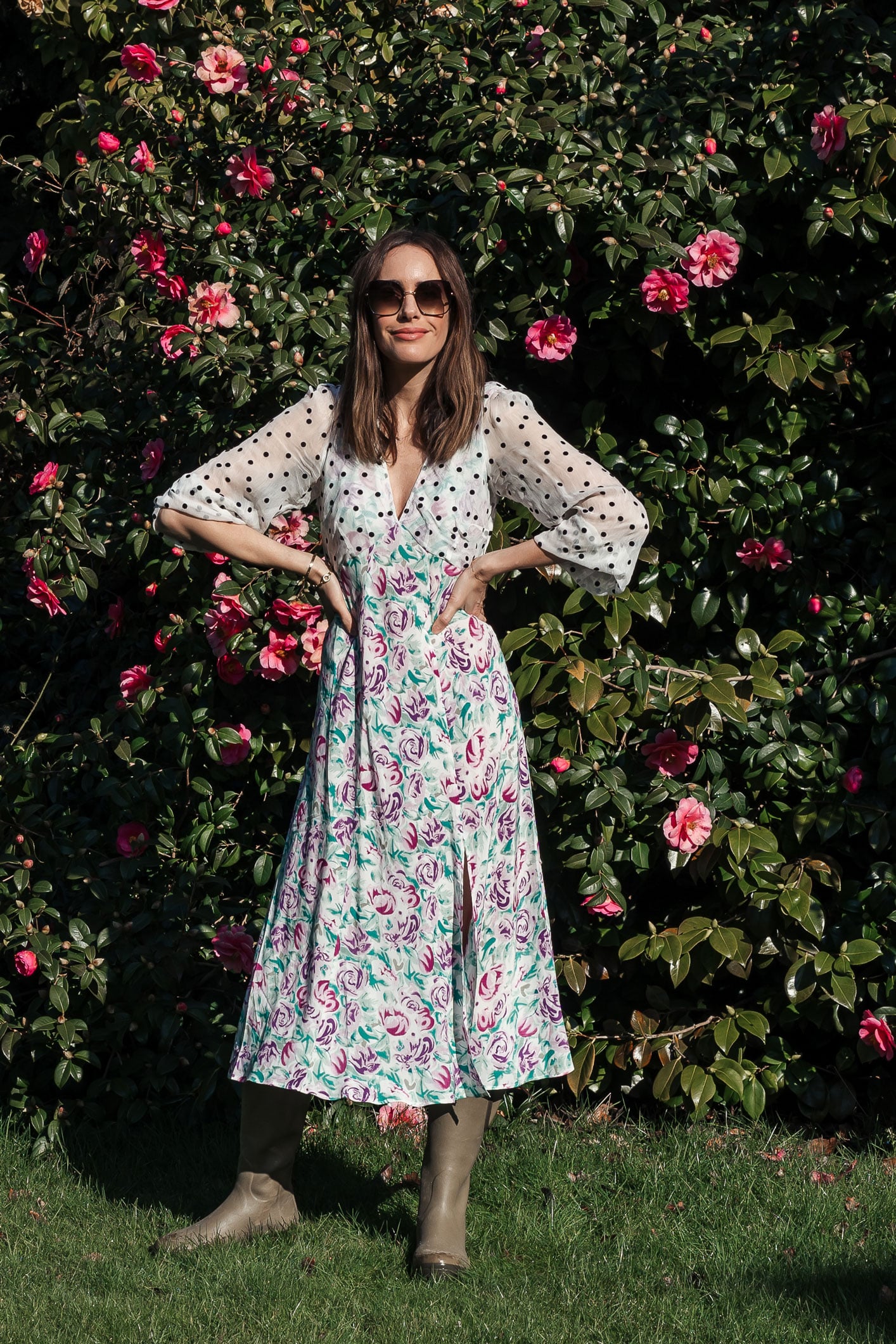
What I’m Wearing: Dress by Rixo (similar style here), Boots by Le Chameau, Sunglasses by Alexis Amor (similar here)
xx,

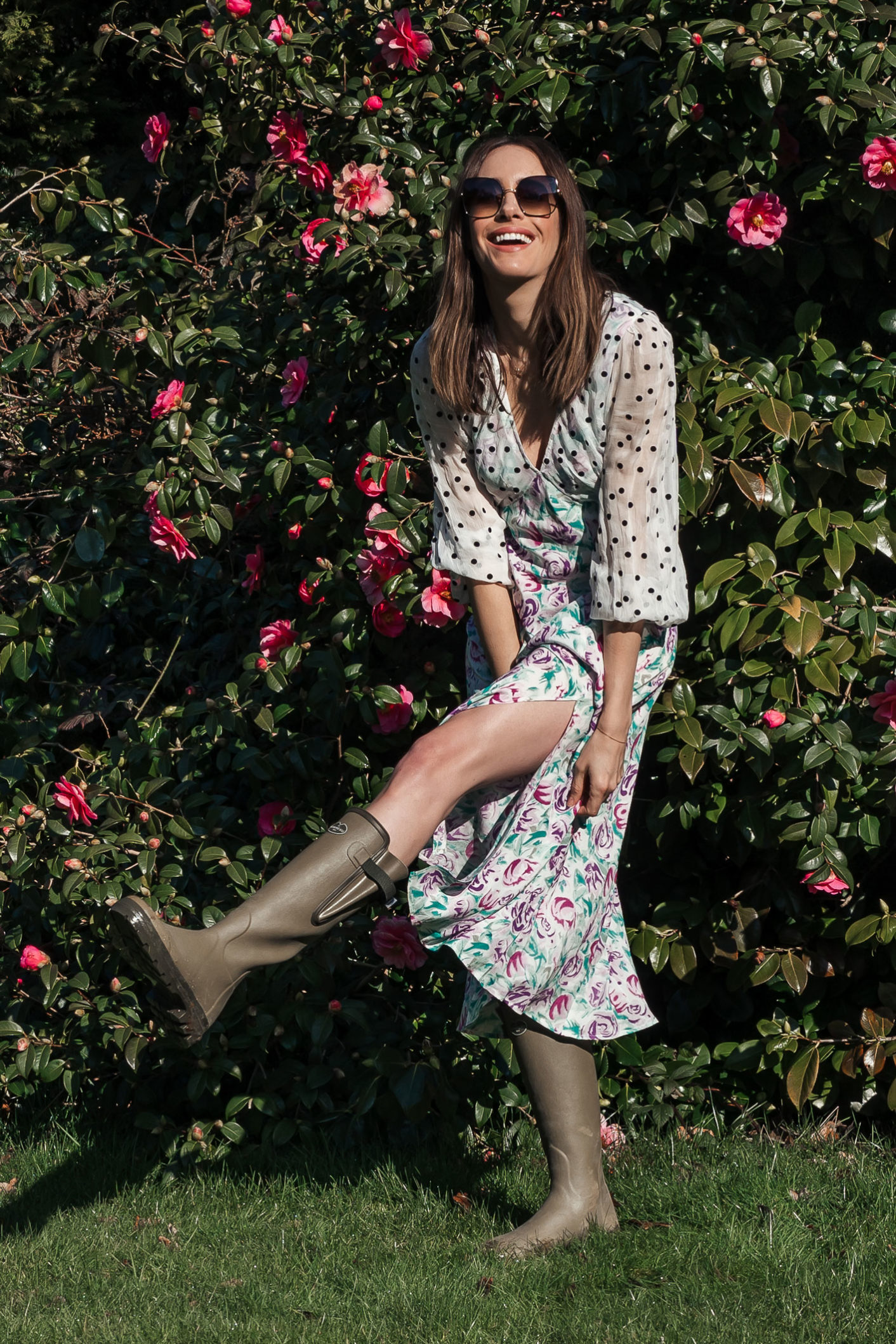

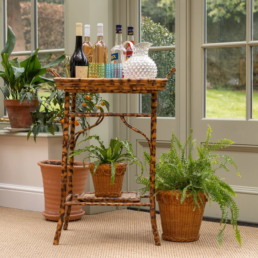

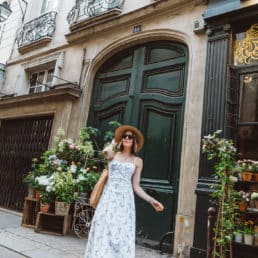
Lovely dress Louise 🙂